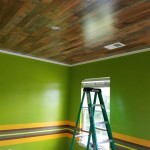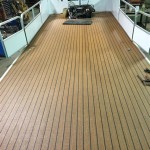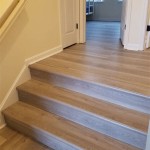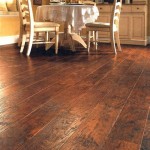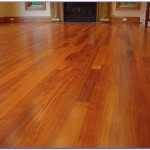The Best Mop To Clean Wooden Floors
Maintaining wooden floors requires careful consideration of cleaning tools and techniques. Not all mops are created equal, and selecting the wrong one can lead to damage, inefficiency, and ultimately, dissatisfaction. Wood, being a porous material, is particularly susceptible to water damage, scratching, and dulling from harsh chemicals or abrasive cleaning tools. This article will explore the various types of mops best suited for wooden floors, detailing their advantages, disadvantages, and key features to consider when making a purchasing decision.
The primary concern when cleaning wooden floors is minimizing water exposure. Excess moisture can seep into the wood, causing it to warp, swell, or even rot over time. Therefore, mops designed for effective water removal and controlled dispensing are crucial. Similarly, the mop head material plays a significant role. Abrasive materials can scratch the finish, while overly soft materials might not effectively lift dirt and grime. Finding the right balance is essential for achieving a clean floor without compromising its integrity and aesthetic appeal.
Beyond water and material considerations, ease of use and maintenance are also important factors. A cumbersome mop that is difficult to maneuver or clean will quickly become a burden. Ergonomic design, lightweight construction, and washable or replaceable mop heads contribute to a more positive cleaning experience. The frequency of cleaning and the size of the area to be cleaned will also influence the optimal mop choice.
Microfiber Mops: A Top Contender for Wooden Floors
Microfiber mops have emerged as a popular and effective choice for cleaning wooden floors. Their key advantage lies in the unique properties of microfiber material. Microfibers are incredibly fine synthetic fibers, typically made of polyester and polyamide (nylon). This fine structure allows them to grab and trap dirt, dust, and debris more effectively than traditional cotton mops. The increased surface area also enhances their ability to absorb liquids, making them efficient at removing spills and minimizing water exposure to the wood.
Furthermore, microfiber mops are exceptionally gentle on wooden floor finishes. The soft fibers prevent scratching and swirling, ensuring the floor maintains its shine and appearance over time. Many microfiber mops feature reusable and machine-washable mop heads, making them a cost-effective and environmentally conscious option. This eliminates the need for disposable mop heads and reduces waste. However, it is imperative to avoid using fabric softener when washing microfiber mop heads, as it can reduce their absorbency and effectiveness.
There are various designs of microfiber mops available, including flat mops, string mops, and spin mops. Flat mops are particularly well-suited for wooden floors due to their large surface area and swivel heads, which allow for efficient cleaning in corners and along baseboards. Spin mops, which often include a bucket with a spinning mechanism to wring out excess water, offer excellent control over moisture levels, making them a good choice for those concerned about over-wetting the floor. The choice between these designs ultimately depends on personal preference and the specific needs of the cleaning task.
Spray Mops: Convenience and Controlled Moisture
Spray mops offer a convenient and efficient way to clean wooden floors. These mops typically feature a built-in reservoir for cleaning solution and a spray nozzle that dispenses the solution directly onto the floor. This eliminates the need for a separate bucket and allows for precise control over the amount of liquid applied. This is particularly important when cleaning wooden floors, as excessive moisture can be detrimental.
Most spray mops utilize microfiber mop heads, further enhancing their suitability for wooden floors. The combination of controlled moisture and gentle microfiber material ensures effective cleaning without damaging the finish. The integrated spray mechanism also makes cleaning quicker and easier, as there is no need to constantly dip the mop into a bucket. This can be especially beneficial for those with larger areas to clean or those who prefer a more streamlined cleaning process.
However, it is crucial to use a cleaning solution specifically designed for wooden floors with spray mops. Harsh chemicals or abrasive cleaners can damage the finish and dull the appearance of the floor. Many manufacturers offer their own branded cleaning solutions for use with their spray mops, but it is also possible to use diluted vinegar or other gentle, pH-neutral cleaning solutions. Regular cleaning of the spray nozzle and reservoir is also necessary to prevent clogging and ensure consistent spray performance.
Traditional String Mops: Considerations for Wooden Floors
Traditional string mops, typically made of cotton or synthetic fibers, have long been a staple in household cleaning. While they can be effective at cleaning various surfaces, their suitability for wooden floors requires careful consideration. The primary concern with string mops is their tendency to retain a significant amount of water. This can lead to over-wetting the floor, which, as previously mentioned, can cause damage to wooden floors over time.
If using a string mop on wooden floors, it is essential to wring it out thoroughly to minimize water exposure. A bucket with a built-in wringer can be helpful in this regard. Furthermore, the type of string material also matters. Cotton string mops tend to absorb more water than synthetic string mops, making them less ideal for wooden floors. Synthetic string mops, such as those made of microfiber or other synthetic blends, offer better water control and are generally a better choice.
The texture of the string mop head can also be a factor. Abrasive or rough string mops can scratch the floor finish, especially if the mop is not properly rinsed. It is important to choose a string mop with soft, non-abrasive fibers. Regular cleaning of the string mop head is also crucial to prevent the buildup of dirt and grime, which can further contribute to scratching. Despite these considerations, string mops can still be effective for cleaning wooden floors if used with caution and proper technique.
In addition to the type of mop, the cleaning solution used is equally important. Avoid using harsh chemicals, abrasive cleaners, or excessive amounts of water. A pH-neutral cleaning solution specifically designed for wooden floors is typically the best option. Diluted vinegar can also be used as a natural cleaning alternative. Always follow the manufacturer's instructions for the cleaning solution and test it on an inconspicuous area of the floor before applying it to the entire surface.
Dusting or vacuuming the floor before mopping is essential to remove loose dirt and debris. This will prevent the mop from simply spreading the dirt around and ensure a more effective cleaning. Use a soft-bristled brush or a vacuum with a floor attachment designed for hard surfaces. Avoid using a vacuum with a beater bar, as this can scratch the floor finish.
When mopping, work in small sections and overlap each stroke slightly. This will ensure that the entire surface is cleaned evenly. Rinse the mop head frequently to remove dirt and grime. If using a bucket, change the water regularly to prevent re-depositing dirt onto the floor. After mopping, allow the floor to air dry completely. This will help prevent water from seeping into the wood. Using a fan can help speed up the drying process.
Regular maintenance is key to keeping wooden floors clean and protected. Dust or vacuum the floor regularly to remove loose dirt and debris. Clean up spills immediately to prevent staining. Use mats or rugs in high-traffic areas to protect the floor from wear and tear. Consider applying a protective coating, such as a polyurethane finish, to help prevent scratches and water damage. With proper care and the right cleaning tools, wooden floors can remain beautiful and durable for many years.
Ultimately, the best mop for cleaning wooden floors depends on individual preferences, cleaning habits, and the specific characteristics of the floor. Microfiber mops and spray mops are generally considered to be the most effective and convenient options. Traditional string mops can be used with caution and proper technique. The key is to choose a mop that is gentle on the floor finish, minimizes water exposure, and is easy to use and maintain. By following these guidelines, it is possible to achieve a clean and beautiful wooden floor without compromising its integrity.

8 Best Mops For Hardwood Floors Of 2024

How To Clean Hardwood Floors Reviews By Wirecutter

8 Best Mops For Hardwood Floors Of 2024

S To Use For Mopping Wood Floors Bond Cleaning In Melbourne
The 6 Best Mops Of 2025 Tested And Reviewed

How To Clean Hardwood Floors Reviews By Wirecutter
Best Mops For Hardwood Floors Microfiber Whole

The 9 Best Mops For Hardwood Floors Of 2025 Your Digs

6 Best Mops 2025 Reviewed
How To Pick The Best Oates Mop For Diffe Floor Types Bunnings
Related Posts

